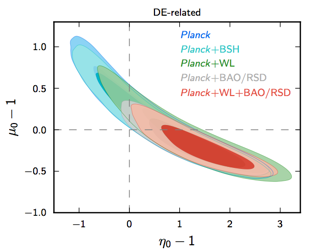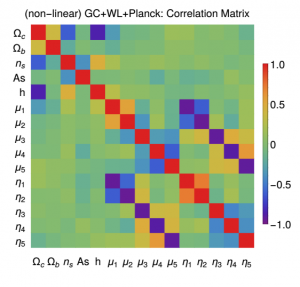Dark Energy and Modified Gravity
Our group is significantly involved in connecting data from future surveys with theoretical models that describe the Dark Universe.
The origin of the accelerated expansion of the Universe is still a mystery. The cosmological constant (a constant contribution to the energy content of the Universe, constant in time and space) was introduced by Einstein in 1917 and is a good fit to observations that we have at present. Nevertheless, its observed value differs by several orders of magnitude with any theoretical expectation; furthermore, a cosmological constant marks our epoch as a very special time in the evolution of the Universe.
A large effort in theoretical cosmology has led to look for alternative possible explanations, that might effectively behave as a cosmological constant at present but may have been different in the past. The acceleration is then typically attributed to a fluid (Dark Energy) or to the need to change the laws of gravity at very large scales (Modified Gravity, where 'modified' means different with respect to Einstein Theory of General Relativity) rather than to an ad hoc fitting constant parameter.

A large variety of models of Dark Energy and Modified Gravity is at present viable. Our group led the ESA Planck analysis on dark energy and modified gravity for the 2015 and 2018 releases. This includes a systematic analysis of models, codes, data, tested against Planck CMB data and in combination with external data sets. Future observations such as Euclid on large scale structure will test entire classes of models and check whether we can discriminate them from a cosmological constant scenario.
In this context, our group has worked on:
- using higher order statistics to infer cosmological parameters such as neutrino masses
- distinguishing modified gravity models using statistics beyond second order or machine learning,
- constraining the amount of early dark energy for different models and observations,
- testing how non-linear scales can break the correlation between Modified Gravity parameters, or how to develop emulators beyond the standard cosmological model.
- Euclid cosmology forecasts in view of launch, leading the first validated Euclid forecast analysis, and contributing to a variety of cosmological papers that used its results and methods.
- using 3D weak lensing to test Horndeski modified gravity models.


